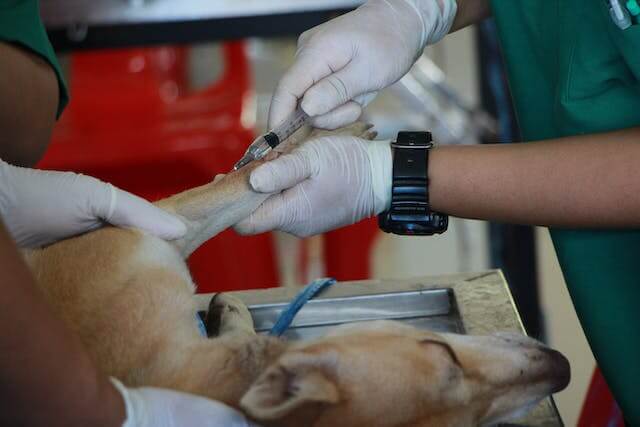A Comprehensive Guide to Multi-Dog Insurance
Owning multiple dogs comes with many joys but also additional responsibilities. Like with any pet, you’ll want to make sure your furry family members are well cared for – and that means having the right type of pet insurance in place. Multi-dog insurance can help cover your pets’ medical bills and provide peace of mind should anything happen to one or more of your dogs.
In this guide, we’ll explain everything you need to know about multi-dog insurance policies. We’ll discuss what makes them different from regular pet insurance, how they work, important factors to consider when choosing a plan, and tips for ensuring you get the best coverage and rates. By the end, you’ll have a thorough understanding of multi-dog insurance and be able to make an informed decision about the right policy for your canine crew.
What is Multi-Dog Insurance?
Multi-dog or multi-pet insurance is a type of pet insurance that allows you to insure more than one dog (or other pet) under the same policy. Regular pet insurance plans are typically designed for a single pet and do not account for situations involving multiple animals in the same household.
With multi-dog coverage, all your dogs are protected under one overarching insurance agreement. This means you only have to pay one set of premiums rather than separate payments for each individual dog. It also streamlines the claims process so you don’t need to file for each pet separately.
In general, multi-pet policies work similarly to standard pet insurance. They provide reimbursement for veterinary expenses related to injuries, illnesses and other medical care. The main benefits are:
- Lower premium costs than insuring dogs individually.
- Consolidated billing – one monthly/annual payment covers all dogs.
- Single annual deductible and maximum payout amount for all dogs combined.
- No need to manage several separate pet insurance accounts.
Most insurers that offer pet insurance will have multi-dog options available as well. The major companies tend to provide the widest scope of coverage and largest provider networks for multi-pet plans.
Factors to Consider When Choosing a Multi-Dog Insurance Plan
With so many pet insurance carriers to choose from, doing your research is important to finding the best multi-dog coverage for your family. Here are some of the key factors to evaluate when comparing multi-dog insurance options:
Annual or Lifetime Limits
Many policies set an annual limit (e.g. $5,000 per year) and/or lifetime maximum payout amount. With multi-dog coverage, these limits apply collectively to all insured pets rather than individually. Make sure the totals are adequate to potentially cover any serious health issues across multiple dogs.
Deductibles
The annual deductible works the same way as with single pet policies – it’s the initial amount you must pay per condition claim before insurance reimbursements begin. With multi-dog plans, this deductible amount applies once per year across all dogs combined. Higher deductibles may equal lower premium costs.
Covered Medical Conditions
Check what conditions are included, such as injuries, illnesses, hereditary/congenital diseases, cancer treatment. Also if wellness care plans offer coverage beyond accident/illness treatment. Comprehensive coverage is ideal with a multi-pet household.
Reimbursement Options
Most insurers offer a choice of reimbursement levels like 70% or 90% of vet bills after deductible is met. The higher percentage means less out-of-pocket costs for you. Figure the level you need based on your budget and dog’s medical history.
Age Limitations
Confirm if any dogs have age restrictions, as some carriers don’t accept pets over a certain age (often 14). You’ll want a policy open to dogs of all ages. Certain breeds may also require older enrollment ages.
Provider Network
Look for plans with good coverage areas and large networks of participating vets so you have flexibility in providers near your location without claim issues. Nationwide networks offer the most convenience.
Premium Costs
As mentioned, multi-pet policies should provide a lower overall premium versus insuring dogs separately. But still compare prices factoring in all policy details above to find the best value. Monthly/annual payment options are typical.
Doing your research upfront will help you navigate these decisions and select multi-dog coverage tailored to your specific needs and budget. Reach out to customer support at prospective insurers too if you have any other questions during your selection process.
Special Considerations for Owners of Large or Mixed Breed Dogs
There are a few added things for multi-dog owners of large breeds or dogs of mixed ancestry to be aware of when obtaining pet insurance. Here’s a quick overview of some key points:
Breed Restrictions
Many pet insurers have breed restriction lists that may impact coverage eligibility depending on the breeds in your dogs. Common restricted purebreds include Pit Bulls, Rottweilers, German Shepherds and Akitas due to perceived health or behavioral risks. Mixed breeds may be evaluated on a case-by-case basis.
Health Risk Factors
Larger purebreds are more prone to certain genetic conditions like hip dysplasia or elbow dysplasia. Mixed large dogs too can inherit ailments from their parents’ lines. Insurers may apply breed-specific coverage limitations for predicted issues. Review plans thoroughly.
Enrollment Age Requirements
It’s advisable to enroll bigger dogs within the first two months of acquiring them, as some companies don’t cover pre-existing conditions if signs were present prior. Older mixed dogs may need to enroll even sooner depending on height/weight limits.
Wellness Plan Options
Wellness add-on coverage is highly recommended for extra-large/mix breed dogs aimed at disease prevention through checkups, screening tests, dental cleanings and non-emergency surgeries. This type of inclusive care is very beneficial in the long run.
So in summary – be extra diligent in verifying breed restrictions, age limits/requirements, and available wellness benefits when insuring multiple large or mixed breed canines together on a multi-pet policy. A pet insurance representative should be able to address any product suitability questions specific to your dogs.
Getting the Best Rates on Your Multi-Dog Insurance
Aside from carefully vetting coverage details, here are additional ways multi-dog owners may qualify for preferential rates on their pet insurance through carrier discounts and promotions:
- Multi-pet household discount – Most insurers reduce premiums by 10-15% automatically when covering 2+ animals together.
- Enrolling dogs together – Signing all dogs up at once qualifies you for any new member enrollment discounts, which offer first year savings of 5-10% in some cases.
- Automatic payment setup – Opting for monthly electronic funds transfers rather than manual payments may lower rates slightly.
- Higher annual deductible – Increasing your deductible to $500-1000 generally reduces premium costs more than a $250 deductible plan.
- Preventive care training – Ask about rate cuts for completing obedience classes, therapy certification, agility training, etc.
- Special pricing referrals – Look into partner organizations and associations offering subscriber deals for professions like animal rescue or veterinary staff.
- Multi-year commitments – Locking into 2 or 3 year continuous coverage commitments typically provides discounts of 5-10% versus annual renewals.
Proactively inquiring about these extra options could help optimize your premium pricing for multi-dog insurance to cover your entire fur family more affordably and prevent financial stress during veterinary emergencies. Maintaining eligibility once quoted also ensures continued savings over the long run.
Submitting and Processing Multi-Dog Insurance Claims
If the unfortunate occurs and one of your pups requires veterinary care, filing insurance claims is simple with multi-pet coverage. Here’s an overview of the multi-dog claims submission and reimbursement process:
- Contact your vet’s office for an examination and diagnosis of the condition requiring treatment.
- Your vet will provide an itemized invoice of all charges including exams, tests, prescriptions and procedures performed.
- Submit the invoice along with your dogs’ names, policy details and claim form to your pet insurer either via mail, fax or online portal upload.
- The insurance company evaluates the claim based on your policy coverage criteria, deductible status, annual/lifetime limits and dog/condition eligibility.
- Within 5-10 business days, you should receive notification of approved claim reimbursement via check in the mail or electronically deposited funds.
- Your reimbursed amount will subtract the deductible and cover the agreed upon percentage (usually 70-90%) of qualifying vet expenses.
- The process is simple regardless of how many multiple claims you submit from different dogs. Reimbursements and accounting are all tied to your single insurance account.
Having multi-dog coverage streamlines the whole claims handling journey so you don’t waste time filling paperwork for separate pets. Any questions on specific claims are directed to an assigned agent familiar with all policy and dog details too for fast resolution.
Frequently Asked Questions About Multi-Dog Insurance
Here are answers to some of the most common queries owners have when exploring multi-dog pet insurance options:
- Do I need separate policies if my dogs live in different households? No, as long as all dogs reside with you.
Here are some additional details on multi-dog insurance:
- Most policies have limits on the number of dogs that can be covered. Typically it’s 2-5 dogs per household. Anything more may require a commercial policy.
- Consider your dogs’ different breeds, ages, medical histories when pricing a multi-dog plan. Higher risk factors could influence rates.
- Wellness plans are very beneficial for multi-dog households. Things like annual exams, vaccines, heartworm/flea prevention add up quickly with multiple dogs.
- Review if policies cover grooming/dental procedures. Some wellness plans help with these non-medical expenses.
- Ask about migration allowances if dogs split time between households. May cover if one stays with relatives part-time.
- Look into adding onboarding bonuses that reimburse new adoption/examination costs when rescuing additional dogs.
- Make sure24/7 coverage is provided regardless of which family member is caring for dogs if others travel.
- Ask carriers how they handle claims for the same condition in multiple dogs if genetically linked. May have separate limits.
- Consider lifetime coverage that stays with the dogs even if you switch insurers. Provides long-term protection.
- Opt for reimbursement of full 100% of vet bills if budget allows to avoid complicated partial reimbursement calculations.
- Make claims submission as effortless as possible by keeping digital records of vet invoices/diagnoses for rapid retrieval.
- Multi-dog plans offer best value overall, but check if specialized conditions warrant individual policies for any high-risk breeds or older dogs.






Leave a Reply